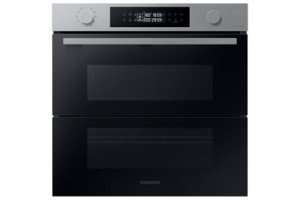Integrated Oven Tools To Enhance Your Daily Life

The Integrated Oven: A Comprehensive Guide
In modern kitchen areas, the pattern toward incorporating appliances with kitchen cabinetry to produce a smooth look has acquired considerable traction. Among these necessary kitchen tools, the integrated oven stands out as a favored choice for lots of property owners and culinary lovers. This short article checks out the advantages, functions, and factors to consider connected with integrated ovens, in addition to answering commonly asked questions.
What is an Integrated Oven?
An integrated oven is a kind of built-in oven that is designed to be flush with kitchen cabinets. Unlike freestanding built in oven hob packages , which often stand apart by themselves, integrated ovens are hidden or partially concealed, offering a sleek and cohesive visual to the kitchen area. These ovens are available in different designs, consisting of single, double, and steam ovens, and can be integrated with racks and cabinets for enhanced storage.
Advantages of Integrated Ovens
Integrating an oven into your kitchen style can provide various advantages. Here are some advantages of selecting an integrated oven:
Space-saving Design:
- Perfect for smaller sized cooking areas, integrated ovens maximize area utilization, leaving more room for other appliances or storage.
Visual Appeal:
- The flush installation creates a streamlined, contemporary look that can elevate the total atmosphere of a kitchen.
Customizability:
- Integrated ovens can often be customized to match kitchen cabinetry or to consist of unique functions such as pull-out racks.
Boosted Functionality:
- Many integrated ovens come geared up with innovative cooking innovation, such as clever programs and convection heating, improving cooking outcomes.
Increased Property Value:
- An integrated oven can boost the worth of a home, attracting prospective purchasers who have an interest in modern, well-equipped kitchen areas.
Choosing the Right Integrated Oven
When choosing an integrated oven, different aspects should be thought about to make sure that the design fits your cooking needs and kitchen layout. Below are some key factors to consider:
Size and Capacity:
- Check the measurements of your kitchen area. Requirement sizes normally range from 60cm to 90cm in width, with capacities varying based upon how lots of dishes you normally prepare.
Type of Oven:
- Decide between standard, convection, and steam ovens. Convection ovens are popular for their even heat distribution, while steam ovens keep moisture for better-flavored dishes.
Features:
- Look for functions that suit your cooking design. Some functionalities to think about include:
- Self-cleaning alternatives
- Smart innovation combination
- Numerous cooking modes
- Safety functions
Energy Efficiency:
- Opt for energy-efficient designs that consume less electricity while offering high efficiency.
Spending plan:
- Integrated ovens are available in numerous cost varieties. Identify your budget while thinking about the longevity and durability of the home appliance.
| Function | Recommended Model | Description |
|---|---|---|
| Self-Cleaning Function | Yes | Saves effort and time preserving tidiness |
| Convection Cooking | Yes | Improves heat circulation for even cooking |
| Smart Technology | Optional | Enables control from mobile phones or voice assistant |
| Multiple Cooking Modes | Yes | Flexibility in cooking various meals |
| Energy Rating | A/A+ | Ensures lower energy intake |
Installation and Maintenance of Integrated Ovens
Correct installation and maintenance are crucial for optimum oven performance. Here are some actions to consider:
Installation Steps
- Preparation: Ensure you have all the needed tools and products before beginning the setup.
- Procedure the Custom Space: Confirm the fit of the oven versus the cabinetry.
- Link to Power Supply: Consult an electrician for safe electrical connections.
- Leveling: Ensure the oven is level to avoid cooking disparities.
- Connect Cabinet Panels: If needed, attach decorative panels for a personalized look.
Upkeep Tips
- Routine Cleaning: Frequent cleansing avoids food buildup and makes sure the oven runs efficiently.
- Inspect for Damage: Inspect the door seals and interior for indications of damage frequently.
- Service Regularly: Schedule expert servicing to keep performance and efficiency levels.
- Follow Operating Instructions: Always follow producer standards for operation and upkeep.
Often Asked Questions (FAQs)
What is the distinction between a built-in oven and an integrated oven?
While both types are created to fit into cabinetry, built-in ovens can stand apart a little, while integrated ovens sit flush with surrounding kitchen cabinetry.
Are integrated ovens more pricey than standard ovens?
Normally, integrated ovens can be more expensive due to the style and functions that accommodate a seamless build into the kitchen.
Can I replace my existing oven with an integrated oven?
Yes, but guarantee to think about the size and any modifications needed for your cabinets and kitchen layout.
How long do integrated ovens generally last?
With proper maintenance, integrated ovens can last anywhere from 10 to 15 years or longer.
Do integrated ovens require special setup?
Integrated ovens often need expert setup to guarantee they are fitted properly with appropriate connections and safety procedures.
Integrated ovens provide a sophisticated and effective option for contemporary kitchen areas, boosting visual appeal while supplying innovative cooking capabilities. By carefully assessing features, setup, and upkeep, property owners can pick an integrated oven that best suits their culinary needs and design choices. With the numerous styles and types readily available, anyone can attain a functional space that complements their cooking way of life, making the integrated oven an outstanding investment for any home.

